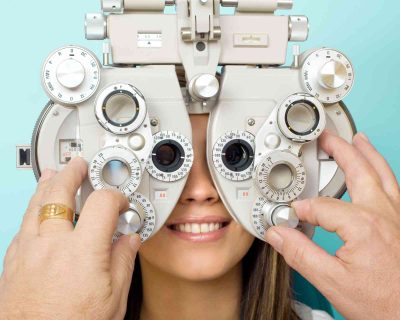
What an Eye Exam Can Uncover
For the majority of the population an annual eye examination is essential for the early detection of any vision problems or diseases. The rule with eyes, as with many medical conditions, is that the early detection of any imperfections or ailments is the key to providing a timely solution that not only restores your vision, but reduces the chances оf any long-term damage. This has never been so important than in modern society where the prolonged use of computers, whether for business or leisure, is placing strains upon the eye.
No matter what stage of life a person finds themselves in, regular eye examinations should become an annual occurrence. Research has shown that children suffering from vision ailments may experience learning issues.
Diabetes, one of the leading diseases in Eurocentric adults creates further complications for retaining healthy sight. Serious eye conditions, such as macular degeneration, glaucoma and cataracts are much more prevalent among adults and senior members of the population. According to the Alliance for Aging Research, visual impairment has been identified as one of the four most significant contributors to lost independence among senior citizens.
Related Article: Why You Need To Get Eye Exams Even With 20/20 Vision
Many do not know what to expect when visiting a trained optometrist for an eye examination, or the series of tests that they will undergo. Firstly, a visual acuity test will be administered, which measures the sharpness and clarity of your vision. This is typically achieved through the reading of letters off a chart while standing approximately 6 meters away.
A confrontation visual field exam ascertains the basic field of vision that you possess. After covering one of your eyes, the optometrist will ask when you see an object entering from the left and right side, testing your peripheral vision.
Everyone can remember a doctor or eye specialist moving a pen from side to side and asking us to follow the pen. This investigates the quality of extraocular movement, and identifies any restrictions or weaknesses in the eyes ability to track movement.
Pupillary tests reveal much more information about the health of eyes and neurological problems that may be present. This component of the eye examination involves the use of a light, with the optometrist ascertaining the reactions of the pupils to light.
Termed the cover test, this exam determines how well your eyes work in unity, whereas the retinoscopy is used to measure refraction and is a vital test to uncover whether prescription eyewear or other corrective measures are required.
In order to examine the health of the rear and front sections of the eye, termed the anterior and posterior segments respectively, an instrument which magnifies the eye many times over is used to illuminate the eye structures. Additional tests may be completed, depending on the individual visual deficiency being addressed at the time, which may include investigating the intraocular pressure of the eyes, as well as utilizing eye drops that enlarge the pupils. This allows the optometrist a larger window into which they can inspect the eye.
A routine eye exam exists for the purpose of detecting vision problems, eye disease and general eye health issues. An eye exam can help identify any of these concerns before you are even aware that they exist. It is generally recommended that everyone have a routine eye exam every 1 to 3 years, depending on age, risk factors and physical condition.




